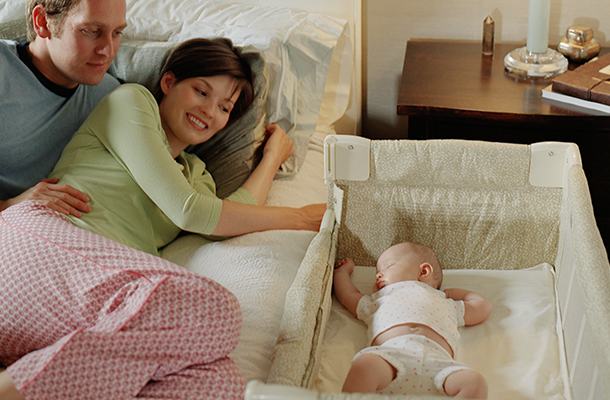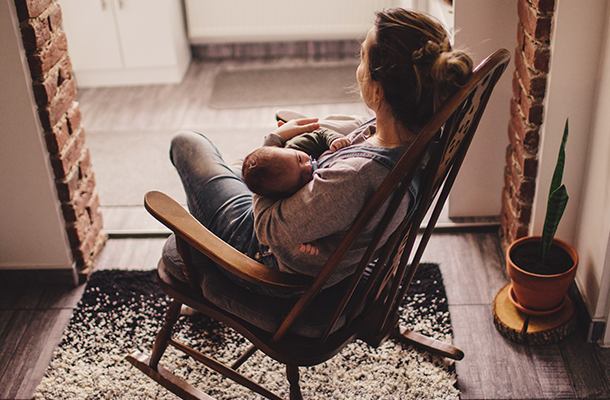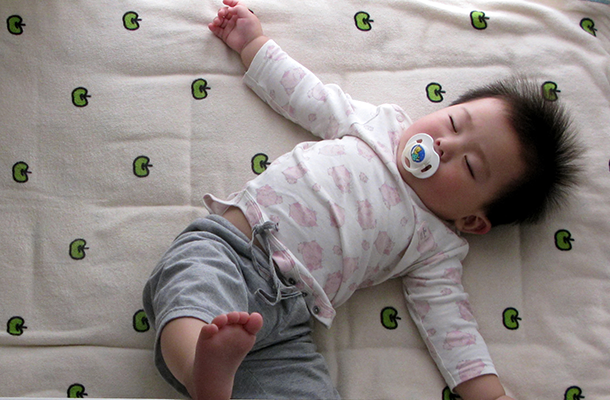About SIDS
About SIDS
What is SIDS?
SIDS is one type in a larger category of unexpected (as opposed to unexplained) infant deaths known as SUDI (sudden unexpected death in infancy). Babies who die suddenly but whose causes of death are explained later (cardiac dysfunction, infection, brain abnormality, etc.) fall into the SUDI category.

Who’s at risk for SIDS?
SIDS is mysterious, since by definition its cause is undetermined. There are no symptoms or warning signs that point to the likelihood of suffering from SIDS. But specific risk factors do exist. No single factor is likely to cause death from SIDS. Rather, several risk factors might exist together to cause an infant to die of SIDS.

About 2,300 babies die of SIDS annually in the United States. Some babies are more at risk than others. SIDS is more likely to affect a baby between the ages of 1 and 4 months old. And most deaths happen during the winter, early spring, and fall months. While there are rare exceptions, the vast majority of SIDS deaths occur among children one year or younger, with the risk dramatically decreasing at one years old.
Native American and Black infants are more likely to die of SIDS than Caucasians. More boys than girls fall victim to SIDS. Factors that place a baby at higher risk of dying from SIDS also may include:
- Babies who sleep on their stomach or side instead of their back
- Overheating during sleep
- A sleeping surface that’s too soft, with fluffy blankets or toys
- Mothers who smoke while pregnant are three times more likely to have a baby with SIDS
- Cigarette smoke in the household from mothers, fathers, and others doubles the risk of SIDS
- Mothers who are less than 20 years old at their first pregnancy
- Mothers who had no, little, or late prenatal care
- Preemies or babies with low birth weight
- If the baby had a sibling who died of SIDS
Why does SIDS occur?
Many researchers and clinicians believe that SIDS is associated with problems in the baby’s ability to arouse from sleep and/or detect low levels of oxygen, or a buildup of carbon dioxide in the blood. Infants may re-breathe exhaled carbon dioxide when they sleep face down.
In normal children, rising carbon dioxide levels activate nerve cells in the brainstem, which stimulate the brain’s arousal and respiratory centers. The baby will then wake up, turn their head, and breathe faster to get more oxygen. SIDS babies, however, may fail to awaken.
The “Triple-Risk Model” has been suggested to explain how SIDS occurs, proposing that it happens when three conditions exist at once:
1
The infant has an underlying abnormality that makes them unable to react to high carbon dioxide or low oxygen blood levels
2
The baby experiences a triggering event such as sleeping face down on their tummy
3
These things happen during a vulnerable stage in the infant’s development, for example, the first 6 months of life
Can SIDS be prevented?
SIDS is so frightening because there are no definitive answers about prevention. It’s the leading cause of death among infants one month to one year old and has stayed unpredictable despite years of research.
That said, SIDS risk can be greatly reduced. There’s no surefire way to prevent it, but you can help your baby sleep more safely by following these tips:

Sleeping on their backs
Put your baby to sleep on their back, rather than on the stomach or side, every time you put them to sleep for the first year. This is unnecessary when the baby’s awake or can roll over both ways without help. Don’t assume that anyone else will put your baby to sleep in the right position — insist on it. Tell your sitters and childcare providers to not put an upset baby on their stomach to calm them.

Keep the crib as empty as possible
Use a firm mattress and try not to put your baby on thick, fluffy padding, such as a thick quilt or lambskin. Don’t leave stuffed animals, fluffy toys or pillows in the crib. If your baby presses their face against them, they can interfere with breathing.
Don’t overheat the baby
Try a sleep sack or other clothing that doesn’t require additional covers to keep your baby warm. Don’t put anything over your baby’s head.

Have your baby sleep in your room
Your baby should sleep with you in your room, but alone in a bassinet, crib or other piece designed for infant sleep, for at least six months, ideally up to a year. Infants aren’t safe in adult beds. The baby can get trapped and suffocate between the headboard slats, the space between the mattress and the wall, or the space between the mattress and the bed frame. An infant can also suffocate if a sleeping parent inadvertently rolls over and covers the baby’s nose and mouth.

Breast-feed your baby, if you can
Breast feeding your baby for at least six months lowers the risk of SIDS.
Don’t count on baby monitors or other devices that claim to reduce the risk of SIDS
The American Academy of Pediatrics* discourages using monitors and other devices because of safety issues and ineffectiveness.

Give them a pacifier
Sucking on a pacifier without a strap at naptime and bedtime could reduce the risk of SIDS. However, if you’re breast-feeding, wait to offer a pacifier until your baby is 3 to 4 weeks old and you’ve settled into a nursing routine. Don’t force it if your baby’s not interested in the pacifier. If the pacifier falls out of your baby’s mouth while they’re sleeping, don’t put it back in.
Immunize your baby
Some evidence indicates immunizations can help prevent SIDS.


